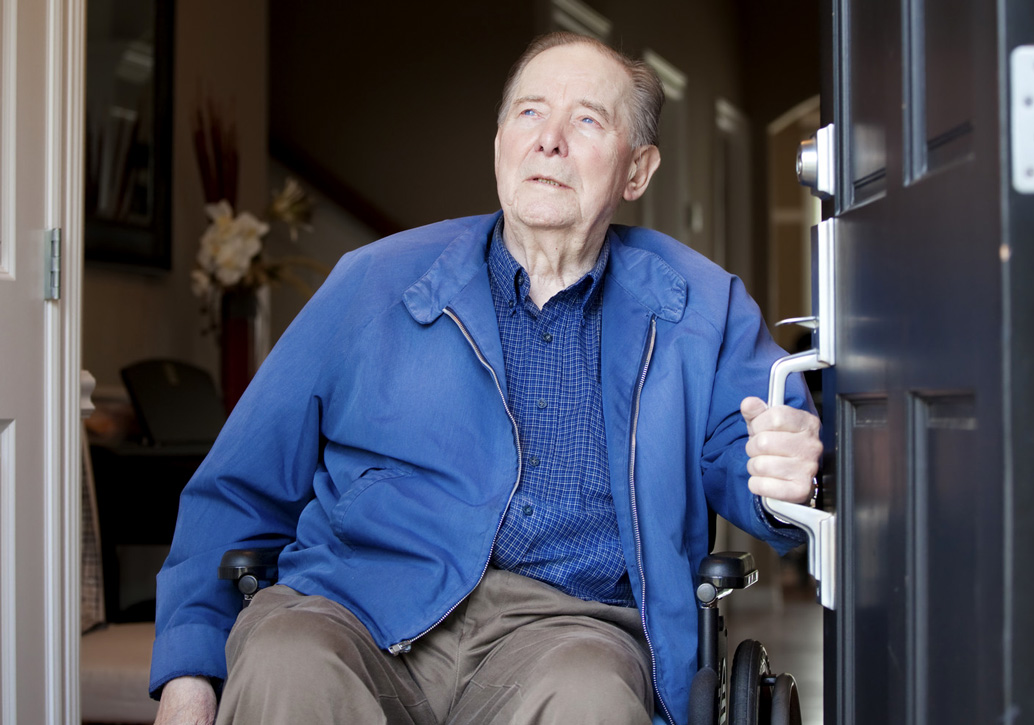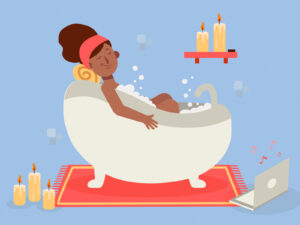(And how to prevent them)
By Mary Bart
In this final instalment of home safety risks and solutions, we look at finding some entertaining hobbies and volunteering, creating an exercise regime and taking care of your personal safety.
1. Boring life
There might be nothing new to look forward to and daily routines are just that: Same old, same old.
Solution:
Let’s look at ways to decrease the boredom for seniors living alone. Here are a few tips to incorporate into your daily life. Try any one of these tips for one week and see how you feel. Chances are your mood will be better, your spirits raised and your step a little lighter.
• Have a goal, have a reason to get out of bed.
• Walk instead of driving
•Take a class that interests you.
• Learn something new.
• Learn the computer and the Internet.
• Write or read a book.
• Try a new recipe or cuisine.
• Wear something different (either buy it or find it already in your closet).
• Call someone.
• Start a container garden.
2. Reduced physical exercise
It is often difficult to stick with a regular exercise routine when you live alone. Many factors, including having no one to exercise with, health problems, fearing injury or falling, lack of balance, energy, support, knowledge and determination can stop those living alone from being physically active. Sometimes, too, we are just lazy. Ironically, exercise is just what is needed to help live a more risk-free, independent life.
Solution:
You are never too old to start a fitness program to improve your health. The key is finding and sticking with an exercise program that you enjoy and doing it often.
• Getting Started. Before you begin a new exercise program, meet with your doctor to see if the proposed activities will be good for you. The key is to start slowly and safely.
• Create a Weekly Exercise Plan. “Fit” exercise into your lifestyle. Find times and days of the week that work best for you.
• Balance Exercises. These help improve stability and balance which are critical to preventing falls and broken hips. Check your local community or seniors’ centres for classes on balance.
• Flexibility Exercises. Being more flexible helps stretch muscles and their connecting tissues that can prevent injury. One of the best ways to improve your flexibility is by doing Yoga or Tai Chi. There are many Yoga and Tai Chi classes for all levels. Either exercise can also be easily done at home. There are countless books and DVDs to choose from. If going to a class or exercising at home don’t appeal to you, try walking, gardening or golfing, each will help keep you strong and flexible.
• Endurance and Aerobic Exercises. These are good for your circulatory system, heart and lungs. Swimming, biking and walking can help prevent diabetes, heart disease and stroke.
• Strength and Resistance Exercises. These exercises can increase your metabolism and help manage your weight, keep your blood sugars at healthy levels, strengthen bones, reduce the risks of obesity and diabetes. Some exercise options include: using free or light weights, wrist and ankle resistance bands, or even small household objects can be effective in an exercise routine.
Switch it up.
Find new and fun ways to exercise. Here are a few ideas:
• Get on the treadmill while watching your favorite movie or TV show.
• Find a walking buddy. It is always good to engage in conversation, why not chat while walking?
• Take a hike and bring your camera.
• Play with a dog. They love going on walks and play “fetch the stick.”
• Take the stairs once in a while instead of the elevator.
• Walk the golf course instead of using a cart. If 18 holes is too much to walk, try walking 9 and riding 9.
3. Lack of personal safety
There is safety in numbers. Having someone else open your front door or pick up your telephone lets the world know that you are not alone. Being alone means it is “just me” to “protect me.”
Solution:
• Name Protection. Try to avoid putting your name on a mail box or phone directory. Just use your last name and the first initial of your first name. Never identify yourself as Mrs. or Ms.
• Change your telephone message. Have a younger person record your phone greeting. When a stranger calls and hears their message, they will have no idea that the younger voice on the phone does not live there. Don’t need to advertise to the world that you are older and alone, based on your phone message.
• Be aware of where you are and what is happening around you. If you feel uncomfortable or threatened, get away from the area or situation as fast as possible. If need be, call the police.
• Purchase a medical alert device. If you fall or need help, these services can save your life.
• Never leave your house key under your doormat.
• Don’t leave any notes outside your door if you plan to go out.
• Stay awake on the bus, subway and while in taxis.
• Never go out at night alone. Find a friend or relative to join you.
• Be mindful of where you are and who is around you.
• Keep your doors and windows locked. If you are moving into a new place, have the locks replaced and new keys made.
• Wear a cross-body purse or a fanny pack. These keep your hands free to grab hand rails, help to stop a fall or protects your wallet while grocery shopping.
• Don’t share any personal information with strangers or people you don’t trust.
• Never let a stranger into your home when you are alone.
• Ask a friend or neighbour to drop by when you are expecting a service or repair appointment.
Take a moment and make a list of the tips that we have covered here that apply to you and will help you to continue to enjoy the benefits of living alone. As mentioned, living alone has it benefits and risks. Knowing how to reduce your risks will help ensure the independent life you want.
Mary Bart is the chair of Caregiving Matters, an Internet-based charity that offers education and support to family caregivers.














